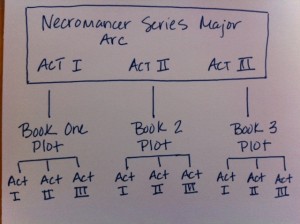I traveled to Florida to visit my family and decided to trade up a plane trip for something more oh, adventurous and less expensive. When transporting five people, cost is definitely an issue. So I settled on a train trip from Tucson to New Orleans, spend a few days in the Big Easy before heading down to Florida. I’d visited New Orleans on a couple of weekend benders while a college student at Florida State University, but those are tales for another time…maybe.
I packed all my writing gear along with my imaginings over conversing with people, admiring the passing countryside, and all sorts of experiences born from travelogues. My own trip was not quite as romantic, but certainly as interesting.
Unfortunately, the trip out wasn’t pleasant. To explain, I have to come clean as battling chronic anxiety. It’s something I’m constantly working on, but it has been impacting my life, make things like travel difficult. As a result, part of my train experience involved dealing with anxiety about being on the train. Also, I hadn’t quite developed my rail legs and spent much of the trip wavering between spilling my guts and moments of reprieve after taking anti-nausea medicine. To my pleasant surprise, I fared much better on the return trip and was even able to write.
The observation deck was definitely nice with amazing views of parts of the country I’d never see otherwise. Past swamps in Louisiana, desert canyons in southern Texas and Arizona, through El Paso with an enlightening view of Mexico and the fence separating neighbors…and over the Mississippi. Let me elaborate on that particular event. Just before arriving in New Orleans, the train makes a slow, dizzying climb up a platform constructed for trains to cross the Huey Long Bridge. Here’s a nice video someone posted on Youtube.
I watched this video before taking the train ride. From the perspective of the person taking the video, the track appears wide and the whole experience cool but not so crazy. When seated on the train, it feels like you are coasting on air. You can’t see the track guiding the train, only the city sprawled out below. It’s a disconcerting fifteen or twenty minutes. I wished I’d had more nerve to actually enjoy the spectacle instead of the occasional terse glimpse out the window while I distracted myself playing Clash of Clans.
Now down to the nitty gritty. The train does not lack for its share of drunks. On the way to New Orleans, a man stumbled around at night and ended up sprawled across two seats belonging to a couple. The conductor was called to sort things out. (By the way, the Amtrak staff was great. One conductor in particular, sensing my initial discomfort, talked to me, offering his assistance. He roamed the train, conversing with travelers, addressing issues, and truly seemed to enjoy his job.) When I was waiting for coffee at 8:30 am at the cafe, the man in front of me asked for coffee and beer. When the attendant told him they couldn’t serve beer until a certain time in accordance with Texas law, he took his coffee with shaking hands and waited until Texas law allowed him to get his dose.
While watching the scenery zip by on the observation deck, two guys behind me discussed our antiquated rail system, comparing it to European trains, which I would have to agree with. The track from El Paso to Louisiana is quite bumpy; however, I don’t to need to hear about how our tracks and trains are a disaster waiting to happen when I’m sitting on one. My only comment to that discussion is how we have a much larger landscape to cover with more challenging terrain than places like France and Spain.
The return trip to Tucson, on our last evening in the observation car, really brought home the Amtrak experience. From a group of kids—white, black, Hispanic, they didn’t care—sitting together playing on their game boys calling each other dorks, to the train enthusiast, gazing out the windows with wide eyes. I’d brought lots of movies, my computer, a book, but most of the time, found myself just taking it all in. A plane would never bring together these various slices of the American population. I wouldn’t have a blog post to write about a plane trip bringing to mind something I learned while in the Peace Corps, riding on trains and buses and vehicles not meant for human transport…sometimes the journey is just as important as the destination.

